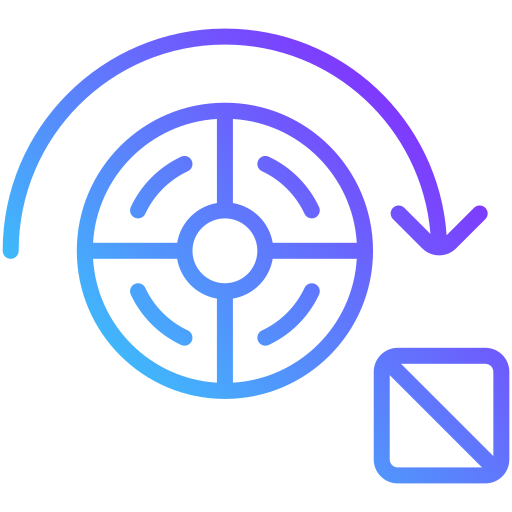Predictive Maintenance - Stop Failures Before They Start
Transform asset reliability and lower costs using real‑time analytics, IoT sensors, and advanced AI machine learning—trusted by industry leaders
Transform asset reliability and lower costs using real‑time analytics, IoT sensors, and advanced AI machine learning—trusted by industry leaders

Your board asks for growth without surprises. Unplanned downtime, emergency repairs, and rising energy spend keep getting in the way. Predictive Maintenance (PdM) on the PETRAN Platform converts sensor data into early warnings, Remaining Useful Life (RUL) forecasts, and guided work—so you prevent failures, cut maintenance cost, protect throughput, and document results with audit‑ready evidence.

Condition-based service typically cuts total maintenance cost ~10–15%, compared with ~3–5% savings from schedule-based programs in similar industries.

Early anomaly detection and risk-based action reduce unplanned downtime by ~30–36%, whereas time-based PM in peer sectors often delivers only single-digit reductions.

Stabilizing critical assets raises OEE by ~2–4 percentage points (first-pass yield up 1–3%, micro-stops down 20–30%), outperforming typical cross-industry programs that net ≤2 pts.

Baseline-normalized M&V commonly shows payback in 6–12 months for PdM rollouts—faster than many capex-heavy upgrades in comparable industries (18–24 months).
Here's how PETRAN turns AI + IoT into measurable results—lower maintenance cost, higher availability and OEE, stronger risk & compliance, and faster time-to-value—by focusing on the value levers that matter most.




A production-ready PdM platform unifies time-synced data from sensors and controls, runs edge analytics for sub-second detection, and applies fleet-level AI with digital-twin context to forecast RUL and classify failure modes. It turns signals into guided actions via CMMS/EAM orchestration, captures root-cause evidence and technician feedback, and operates under enterprise governance—versioned models, KPI thresholds, approvals, RBAC/SSO, encryption, and audit logs—so you can prevent failures, reduce cost, and prove outcomes with confidence.

Normalize vibration, thermal, electrical, process, and event streams from PLCs/historians and sensors; enforce clock synchronization, asset IDs, units, and quality flags for lossless, traceable data.

Run feature extraction and first-line anomaly screening at gateways for sub-second alerts, then stream compressed, ordered records to the cloud with store-and-forward and back-pressure control.

Compute asset health indices with dynamic thresholds and anomaly scores; visualize trends, confidence, and drift to surface issues before they become failures.

Deploy fleet and class-specific models that estimate Remaining Useful Life with uncertainty bands; use digital-twin context (duty cycles, setpoints, environment, work history) to sharpen forecasts.

Map signals to failure signatures (e.g., imbalance, misalignment, bearing wear, cavitation) and automatically classify probable modes with explainability (key features, spectra, images).

Link symptoms → likely causes → corrective actions with expected duration, risk, tools, and parts; capture technician feedback to continuously improve recommendations.

Create risk-scored, guided work orders in CMMS/EAM with tasks, skills, permits, and spares; sync status and evidence (plots, photos, excerpts) for closed-loop verification.

Manage KPI thresholds, approvals, and change control; version and monitor models for drift with safe rollback; enforce RBAC/SSO, encryption, and audit logs across cloud/on-prem/VPC deployments.
Put performance on one page—turning reliability, cost, production, and program health into executive KPIs that drive decisions and dollars.
Turn reliability into a competitive weapon. Track MTBF and MTTR in real time, spotlight avoided downtime hours, and tighten alarm precision so your teams act on the signals that matter—before a glitch becomes a stoppage.

Make spend as predictable as your schedule. Watch maintenance cost per asset, overtime, parts turns, and energy per unit drop as you shift from calendar work to condition-based actions that hit the sweet spot of cost and risk.

Protect output and quality at the same time. Monitor throughput stability, slash scrap/rework, and lift schedule adherence by keeping assets in their optimal operating envelopes—every shift, every line.

Prove the system is getting smarter—and safer. Track model accuracy and drift, work compliance, and time-to-acknowledge/repair so you know where to tune, where to scale, and where you're turning data into dollars.

A clear, CFO-friendly path to evaluate, buy, and scale condition monitoring—grounded in measurable ROI, predictable total cost of ownership, and controlled risk from pilot to enterprise rollout.

The business case is driven by avoided downtime, a lighter preventive-maintenance load, fewer emergencies, longer asset life, and lower energy use.

Total cost of ownership is shaped by the platform subscription, the mix of sensors and gateways, the effort to install them, and the change-management needed to embed new workflows.

You can contract as SaaS, deploy on-prem/VPC, or run a hybrid model, and roll out in phases by asset class and site.

Reduce risk by running pilot gates with clear exit criteria, tracking quantifiable success metrics, and maintaining an executive steering cadence.
Predictive maintenance (PdM) uses sensor data and analytics to predict equipment failures before they happen so teams can schedule service at the optimal time.
Preventive follows fixed intervals (calendar/usage). Predictive uses real-time condition data and models to service only when risk rises—reducing cost and downtime.
IoT sensors (vibration, temperature, electrical, pressure/flow, oil) stream data to edge/cloud analytics. Models detect anomalies, estimate Remaining Useful Life (RUL), and trigger recommended work orders.
Rotating assets (motors, pumps, fans, gearboxes, compressors), CNC/spindles, conveyors, turbines/generators, substations/switchgear, cranes/lifts, HVAC, and critical utilities.
Basic condition signals (e.g., vibration and temperature) plus operating context (speed/load, setpoints, production). You can expand to electrical, pressure/flow, and oil analysis over time.
No. Unsupervised anomaly detection provides early wins. Labeled events later improve failure-mode classifiers and RUL accuracy.
Accuracy depends on sensor quality, sampling rates, operating variability, and model maturity. Mature programs track error bands and continuously retrain.
Many pilots show avoided downtime within 6–12 weeks once data is connected and alert thresholds are tuned.
MTBF, MTTR, avoided downtime hours, alarm precision, maintenance cost per asset, spare usage/parts turns, energy per unit, scrap/rework, schedule adherence, model accuracy/drift.
Yes. By preventing unplanned stops and stabilizing processes, PdM raises availability and performance, which lifts overall equipment effectiveness (OEE).
Modern platforms connect via OPC-UA, Modbus/TCP, MQTT, and REST APIs to historians and sync recommended actions into CMMS/EAM work orders.
Yes. Edge inference enables sub-second alerts and resilience when connectivity is limited; the cloud handles fleet learning and retraining.
Look for RBAC/SSO, encryption in transit/at rest, audit logs, tenant isolation, and deployment options (cloud, on-prem, private VPC).
Manufacturing: motors/gearboxes, spindles, conveyors, ovens/furnaces Oil & Gas/Chemicals: pumps/compressors, heat exchangers, pipelines, fired heaters Utilities/Energy: turbines, substations, water/wastewater pumps, solar/inverters Mining/Metals: crushers/mills, ventilation fans, haul trucks Transport/Logistics: fleets, cranes/lifts, cold-chain equipment, rail assets
Use adaptive thresholds, multi-signal anomaly scoring, risk matrices, and SLA-based escalation so only actionable alerts reach teams.
Select a critical asset class, connect data, baseline normal behavior, tune alerts, prove avoided downtime, then template to other lines/plants.
Costs include platform subscription, sensors/gateways as needed, and optional services for deployment and change management; savings usually come from avoided downtime and reduced PM load.
Yes. Detecting degradation (e.g., misalignment, fouling, bearing wear) improves efficiency and lowers kWh per unit.
Incomplete sensing, poor data quality, lack of workflow integration, and limited change management. Address with a clear pilot scope, data validation, and CMMS/EAM orchestration.
Use baselines and Measurement & Verification (M&V) to quantify avoided downtime, cost savings, and quality gains, all linked to work orders and source data.
![]() Identify your challenge, and we're here to help
Identify your challenge, and we're here to help